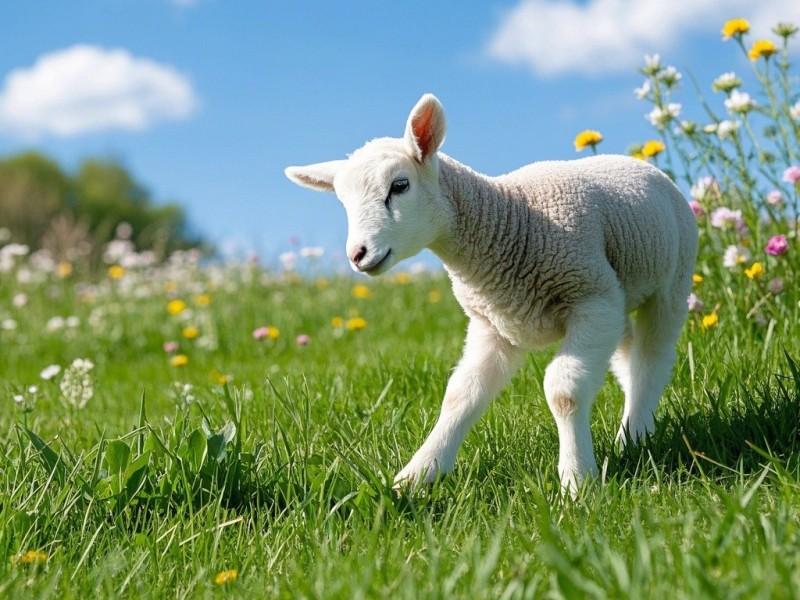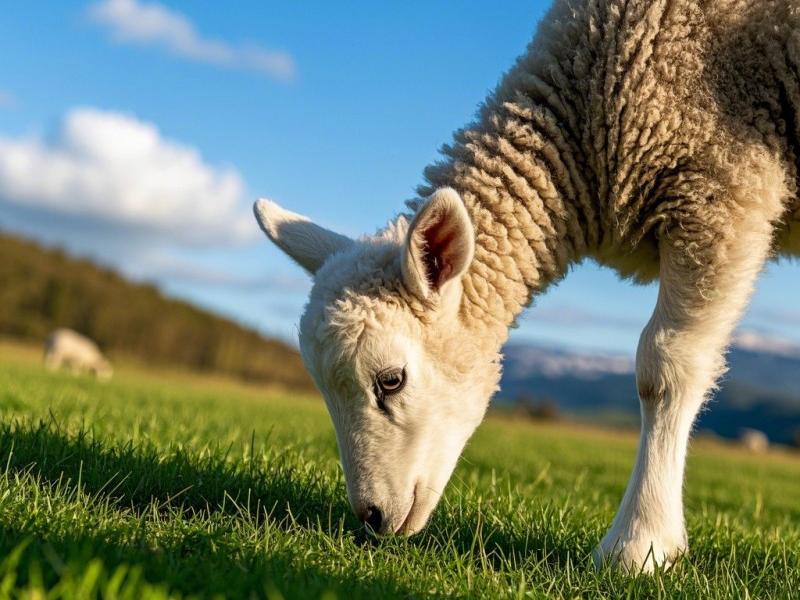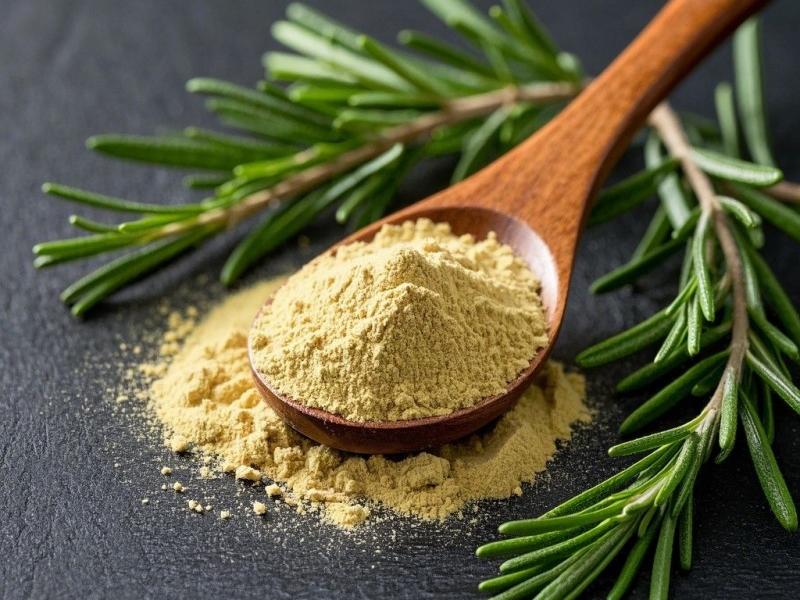What Is the Use of Rosemary in Animal Feeding?
Rosemary (Rosmarinus officinalis) is a shrub in the family Lamiaceae. It was first cultivated in Europe and northern Africa along the Mediterranean coast, and was introduced to China during the Cao Wei period. Rosemary prefers warm climates and requires sandy soil with good drainage for planting, so it is mainly grown in places such as Hunan, Yunnan, Guangxi and Guizhou in China. Rosemary is a natural spice plant, and its extracts include rosemary essential oil, rosmarinic acid, carnosic acid/phenol, oleanolic acid and ursolic acid. These rosemary extracts contain active substances such as flavonoids, terpenes, phenolic acids and lipids, which play a positive role in antioxidant, immunity enhancement, anti-tumor, antibacterial and prevention of cell damage [1-3].
1 Extraction and processing of rosemary extract
The rosemary leaves are crushed or cut, transferred to a distillation vessel, distilled by passing water vapor into the distillation vessel, and the rosemary essential oil is collected. The distilled rosemary leaves are extracted by reflux with an organic solvent to obtain an extract. After the extract is decolorized, the solvent is recovered, and boiling with water is continued. Centrifugation, precipitation, vacuum drying and other processes to obtain fat-soluble ingredients such as carnosic acid, oleanolic acid and ursolic acid; the centrifuged liquid can be concentrated to obtain the water-soluble ingredient rosmarinic acid [3]. Ethanol is generally used for organic solvent extraction. In addition, more advanced technologies such as supercritical carbon dioxide (CO 2) extraction, ultrasonic-assisted reflux and supercritical fluid extraction can also be used to extract the antioxidant components of rosemary [4-6]. The extracted antioxidant components can be processed into products with different compositions and dosage forms according to different market demands and application scenarios.
2 Main components of rosemary extract and their functions
2.1 Rosemary essential oil
Rosemary essential oil is a product collected by distilling dried rosemary leaves. Its main beneficial components are α-pinene, 1,8-cineole, camphene, camphor, borneol and β-pinene [7]. Rosemary essential oil has the advantages of a small molecular weight, easy penetration, the ability to inhibit tyrosinase activity, and a unique aromatic odor. It can be used in skin care products to improve skin condition and inhibit the production of pigments [8-9]. In addition, due to its unique aromatic scent, rosemary essential oil has obvious insecticidal effects and can be used on agricultural crops, such as Tetranychus urticae and Trialeurodes vaporai- rum, which have good toxic activity and do not affect the growth of the host plant [10]; can effectively prevent infection by the red spider mite (Tetranychus cinnabarinus), which is related to the increase in superoxide dismutase (SOD) and catalase (CAT) activity [11]. The insecticidal mechanism of rosemary essential oil may be that it inhibits acetylcholinesterase (AChE) and causes an oxidative imbalance in the pest, thereby exhibiting an insecticidal effect [12].
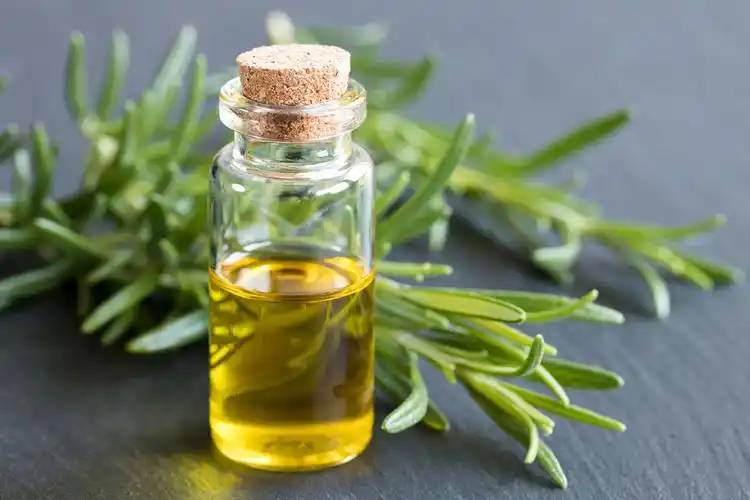
In addition, rosemary essential oil can quickly penetrate and cause pests to lose water or die due to dehydration because of its small molecular weight. Studies have shown that feeding a diet supplemented with rosemary essential oil can promote animal growth and improve immunity and antioxidant capacity [13-14].
2.2 Rosmarinic acid
Rosmarinic acid is a phenolic diterpene compound that is a colorless to pale yellow powdery crystal. It is fat-soluble and has the advantageous characteristics of being highly effective, non-toxic and heat-resistant [15]. Studies on the antioxidant capacity of several rosemary extracts have shown that rosmarinic acid has the strongest antioxidant capacity, which is superior to that of rosmarinic acid, carnosol and rosemary phenol [16]. Carnosic acid has a protective effect on dopamine nerve damage induced by 1-methyl-4-phenyl-1,2,3,6-tetrahydropyridine, which may be related to its inhibition of oxidative damage to neurons and prevention of abnormal elevation of caspase-3 activity [17]. Salvianic acid can inhibit the occurrence of ferroptosis, increase the number of surviving neurons, reduce spinal cord injury, and promote the recovery of neurological function. The mechanism may be related to the activation of the nuclear factor E2-related factor 2 (Nrf2) pathway, which enhances antioxidant capacity
[18].
2.3 Ursolic acid and oleanolic acid
Ursolic acid and oleanolic acid are pentacyclic triterpenoids that are isomers of each other (oleanolic acid has a methyl group at the C-20 position, while ursolic acid has a methyl group at the C-19 position) and have similar biological activities [19]. Oleanolic acid can significantly reduce hepatocellular necrosis, steatosis, atrophy, ballooning, interstitial inflammatory response, mitochondrial swelling, endoplasmic reticulum vesicle lesions and reduced glycogen caused by carbon tetrachloride [20-21]. Ursolic acid can prevent ethanol-induced injury to isolated rat hepatocytes, release transaminases and activation factors, and block ethanol's ability to reduce hepatocyte viability [22]. The hepatoprotective effect of oleanolic acid and ursolic acid may be related to their regulation of lipid metabolism and enhanced antioxidant capacity on the one hand [21]; on the other hand, it may be related to their enhanced immune function. Ursolic acid can inhibit the nuclear factor-κB (NF-κB) signaling pathway in intestinal epithelial cells and macrophages, thereby alleviating experimental colitis in mice [23].
2.4 Rosmarinic acid
Rosmarinic acid is a phenolic acid with strong antioxidant properties. Its main function is to prevent oxidative damage by scavenging free radicals in the body, an effect that is related to the structure of the hydroxy group [1]. In addition, rosmarinic acid can alleviate the inflammatory response caused by oxidized low-density lipoprotein (oxLDL)-induced atherosclerosis [24] and inhibit the production of nicotine-induced C-reactive protein and reactive oxygen species (ROS) in vascular smooth muscle cells [25]. Rosmarinic acid also inhibits bacterial growth. The mechanism of action is as follows: on the one hand, it alters the permeability of the cell membrane, causing leakage of sugars and proteins and thus disrupting the metabolic processes in the bacterial cell; on the other hand, it inhibits the activity of DNA polymerase and disrupts the replication of bacterial DNA [26].
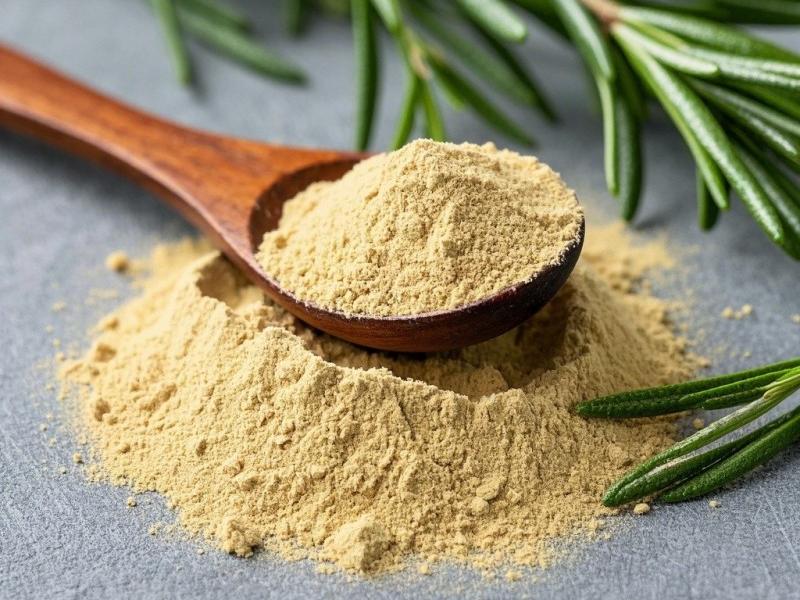
3 Effect of rosemary extract on animal growth performance
Rosemary extract added to feed can promote animal growth (Table 1). A study on pigs showed that adding 0.03% rosemary essential oil to the weaning piglet diet can improve the apparent digestibility of crude fat and neutral detergent fiber, thereby improving feed conversion efficiency, but has no significant effect on weight gain, feed intake and diarrhea rate [14]; Adding 0.05% rosemary acid to the feed can improve the morphological structure of the colon in weaned piglets after infection with the enterotoxin-producing Escherichia coli K88 (ETEC K88), regulate the composition of the colon flora, increase the content of short-chain fatty acids in bacterial metabolites in the colon chyme, and help maintain the barrier function of the colon, relieve the inflammatory response in the colon caused by ETEC K88 infection, alleviate diarrhea in weaned piglets and maintain intestinal health [27].
Studies on poultry have shown that adding 0.5% rosemary leaf powder to the feed can increase the body weight gain and feed intake of broilers and improve feed efficiency [28]; adding 0.01% to 0.04% rosemary extract to the feed of laying hens can significantly improve the color of the egg yolk [29]. Studies on aquatic animals have shown that the addition of 0.04%, 0.07%, 0.1% or 0.3% rosemary essential oil to the feed can improve the specific growth rate and weight gain of rainbow trout (Oncorhynchus mykiss), and the improvement effect is positively correlated with the amount of rosemary essential oil added [30]. The addition of 0.05% rosemary extract to the feed can improve the survival rate of rainbow trout, the protein and fat efficiency ratio, and improve the degree of fattening [31]; the addition of 0.5% rosemary extract to the feed can significantly increase the weight gain rate and protein efficiency ratio of the sharp-toothed catfish (Clarias gariepinus) [32]; A mixture of carnosic acid and carnosol (1:1) added to the feed had no significant effect on the growth performance of golden seabream (Sparus aurata), but significantly reduced liver fat degeneration and the activities of aspartate aminotransferase (AST) and alanine aminotransferase (ALT) in the serum [33]. Adding 2% and 3% rosemary leaf powder to the feed of carp (Cyprinus carpio) can increase the weight gain rate and specific growth rate [34].
Studies on other animals have shown that the addition of rosemary extract (containing 5% rosmarinic acid, 5% polyphenols, 5% moisture, 10% ash, 1% caffeic acid) to the feed of milk goats can increase milk production by 5.84% (not statistically significant) [35]. Cardinali et al. [36] reported that adding 0.1% rosemary essential oil and 0.1% oregano essential oil complex to the rabbit feed can increase the average daily weight gain and the weight at day 80, but has no significant effect on the average daily feed intake and feed conversion rate. The improvement of animal growth performance is attributed to: 1) rosemary extract can improve nutrient digestion rate and enhancing the intestinal absorption and utilization of nutrients [30, 37]; 2) rosemary extract has anti-inflammatory, antioxidant, lipid-metabolism-regulating and antibacterial effects, which can improve the health of the liver and intestines, enhance their metabolic capacity, and thus promote animal growth.
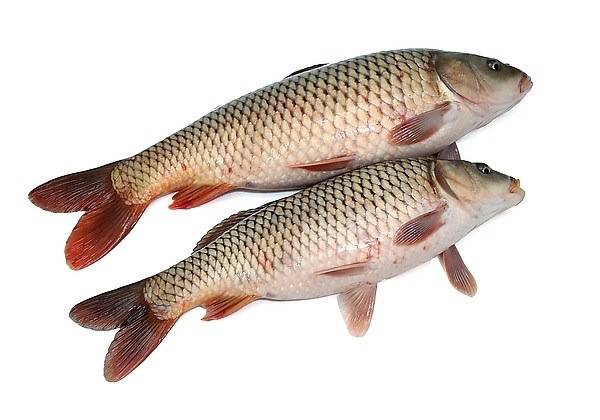
4 The effect of rosemary extract on animal immunity
The improvement of animal growth performance is closely related to the enhancement of immunity, which is closely related to lysozyme (LZM), immunoglobulins and inflammatory cytokines [40]. Studies have shown that adding rosemary essential oil to the feed can increase the activity of LZM in rainbow trout serum and the total immunoglobulin and white blood cell content, and reduce the activity of AST and ALT [30]; it can reduce the activity of AST and ALT and glucose content in sturgeon serum, and increase the total protein, globulin and lymphocyte content [39]. Rosmarinic acid added to the feed can significantly reduce the levels of interleukin-1β (IL-1β) and tumor necrosis factor-α (TNF-α) in the mucous membranes of piglets, increase the level of interleukin-10 (IL-10), down-regulate the mRNA expression levels of Toll-like receptors (TLR)-2 and TLR-4, and up-regulate the mRNA expression level of TLR-5 [27]; can increase the content of immunoglobulin A (IgA) and immunoglobulin M (IgM) in the serum of milk goats, but has no significant effect on the content of cytokines [35].
Adding rosemary leaf powder to animal feed can increase the levels of albumin and globulin in the serum of broilers and carp [28]; it can increase the LZM activity, complement alternative activity (ACH50), and white blood cell count (WBC) in the serum of carp [34]; and it can increase the levels of immunoglobulin, interferon-γ (IFN-γ) and IL-10 levels in broiler serum [38, 41]. The mechanism by which rosemary extract improves animal immunity may be related to its inhibition of the NF-κB signaling pathway. NF-κB is an important transcription factor that regulates the gene expression of cytokines and other factors related to inflammatory responses [42]. Studies have reported that rosmarinic acid can downregulate the mRNA expression level of NF-κB in the mucosa of piglets [27]; ursolic acid can inhibit the activation of NF-κB in intestinal epithelial cells and macrophages, thereby reducing the colitis response in mice [23]. In BV-2 glial cells, it was found that rosemary extract can reduce the protein expression levels of IL-1β, TNF-α and NF-κB, enhancing the anti-inflammatory effect [43].
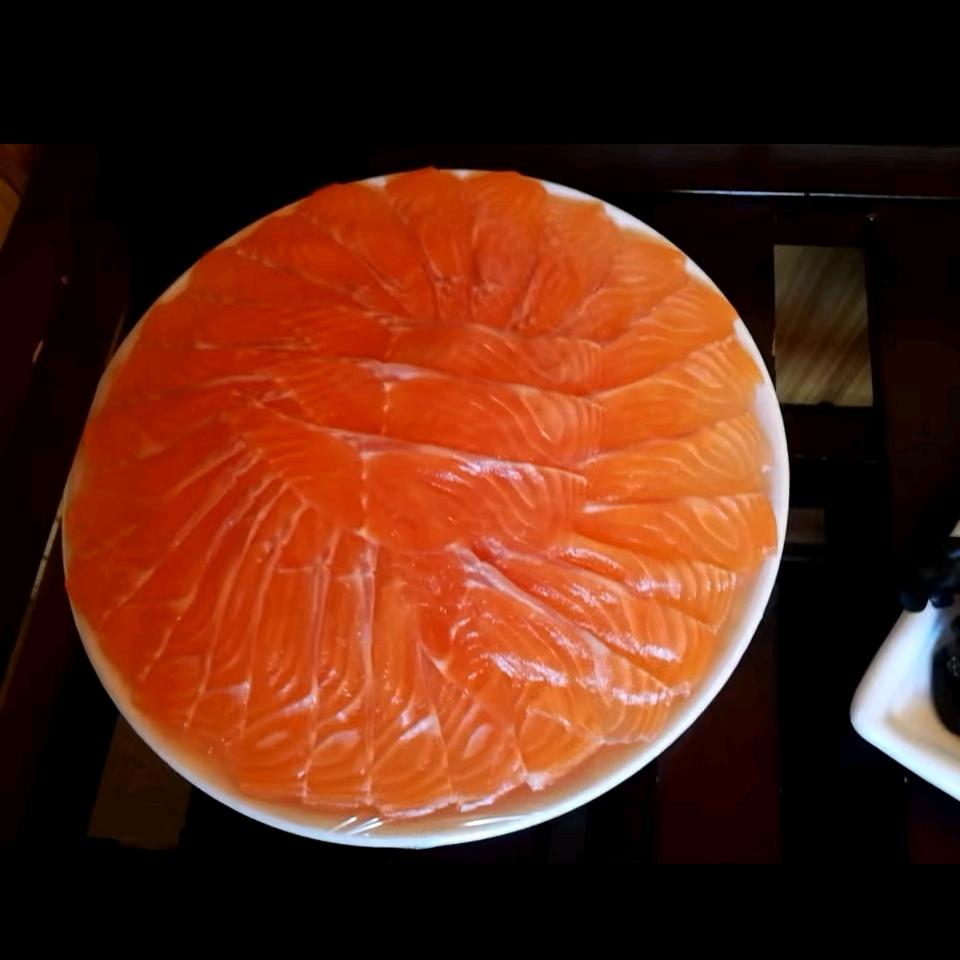
5 Effect of rosemary extract on the antioxidant capacity of animals
Free radicals are waste products produced by organisms during the process of obtaining biological energy. When animals are fed high-protein, high-fat diets, or when they are fed at high rates or kept at high stocking densities, their energy metabolism is more vigorous, producing more free radicals. To resist oxidative damage, animals have developed an antioxidant system that mainly includes enzymatic and non-enzymatic antioxidant systems. The enzymatic antioxidant system includes antioxidant enzymes such as SOD, CAT and glutathione peroxidase (GPx), which can scavenge oxygen free radicals [44].
Feeding a diet supplemented with rosemary essential oil can increase the SOD and GPx activities in the serum of weaned piglets, and has no significant effect on total antioxidant capacity (T-AOC) and malondialdehyde (MDA) content [14]; it can increase the SOD activity in the serum of broiler chickens [45] and Jinghai yellow chickens [13] and reduce MDA content; can increase the CAT and SOD activities in rainbow trout serum [30]. Feeding a diet supplemented with rosmarinic acid can increase the GPx activity in the serum of dairy goats, but has no significant effect on the MDA content, T-AOC and SOD activity [35]. Feeding a diet supplemented with hesperidin and rosmarinic acid can reduce MDA levels in the breast muscle of broilers, increase total superoxide dismutase (T-SOD) activity, and increase the mRNA expression levels of quinone NADH dehydrogenase 1 (NQO1) and SOD [46].
Feeding a diet supplemented with rosemary leaf powder can increase the activity of glutathione S-transferase (GST) and T-SOD and the content of glutathione (GSH) in the thymus of broilers, and reduce the content of MDA [38]; it can increase the activity of SOD and GPx in the serum of rainbow trout, but has no significant effect on the activity of CAT [31]; can increase the activity of SOD and CAT in the serum of carp [34]. The mechanism by which rosemary extract improves the antioxidant capacity of animals is related to its molecular structure. The phenolic hydroxyl group has the ability to scavenge oxygen free radicals, and the conjugated double bond at the C-3 position has a synergistic effect. It is also related to the activation of the Nrf2 pathway, and Nrf2 is a key transcription factor that upregulates the expression of antioxidant enzyme genes [47].
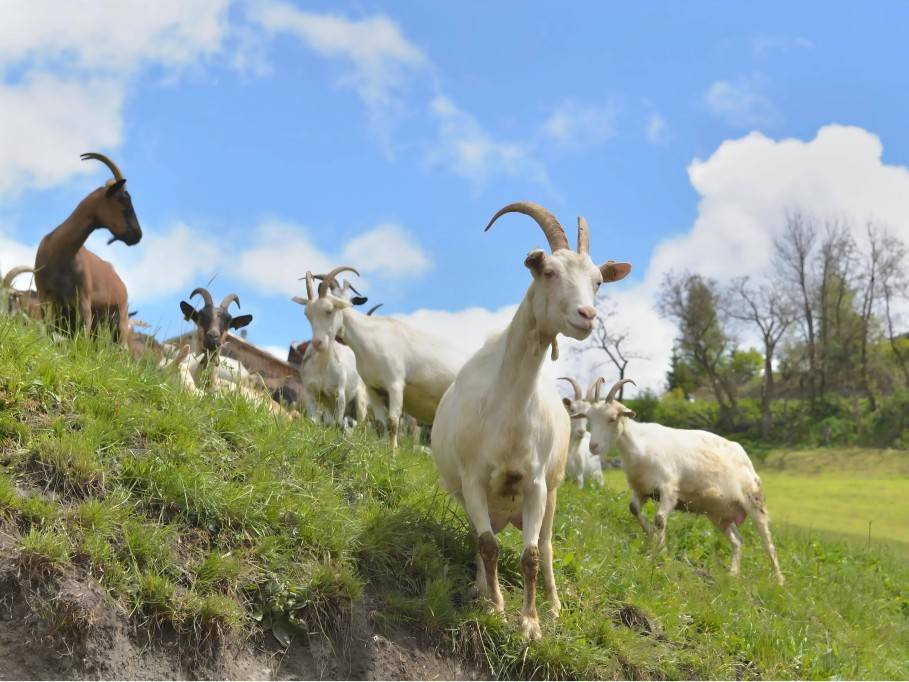
Rosmarinic acid-containing additives added to broiler diets can upregulate Nrf2 mRNA expression in muscle [46]. In studies on human colon cancer cell lines (HCT116 and SW480), rosemary extract was found to increase the protein expression levels of Nrf2, glutathione peroxidase 1 (GPx 1), glutathione S-transferase P1 (GSTP1) and SOD [48]. Studies in mice have shown that the addition of rosemary extract to a high-fat diet can increase the mRNA and protein expression levels of CAT, SOD, GPx and Nrf2 in the liver, enhancing antioxidant capacity [49].
6 Effect of rosemary on meat quality
Meat quality affects consumer purchasing decisions. Parameters such as meat color, shear force, cooking loss and pH are indicators of meat quality [50]. In addition, consumers often associate meat color with freshness and meat quality, and meat color directly affects consumer purchasing decisions [51]. The lower the L* value of the muscle, the less white it is and the less water oozes from the surface, indicating that the meat quality is better; the higher the a* value and the lower the b* value of the muscle, the better the meat color [52]. Studies have reported that adding 0.015% rosemary essential oil to the feed of Beijing yellow chickens can increase the leg and breast muscle rates, increase the moisture and crude protein content and reduce the crude fat content in the leg and breast muscles, improve the meat color, reduce the shear force and pH, and improve the meat quality [13]. In broilers, feeding a diet supplemented with rosemary acid can improve the slaughter rate and breast muscle rate, reduce the L* and b* values of the breast muscle, reduce cooking loss and shear force, and improve breast muscle quality [46].
The increase in breast muscle rate and leg muscle rate may be related to the fact that flavonoids improve the body's deposition of protein and thus improve slaughter performance. In addition, rosemary extract also plays an active role in extending the shelf life. It has been reported that rosemary extract can significantly inhibit the growth rate of microorganisms during the refrigeration of Litopenaeus vannamei, slow down the increase in pH, total volatile basic nitrogen (TVB-N) and thiobarbituric acid (TBA) values, maintain good hardness and elasticity values, reduce the rate of protein oxidation, and maintain storage TVB-N) and thiobarbituric acid (TBA) values, maintains good hardness and elasticity values, reduces the rate of protein oxidation, maintains the stability of the protein tertiary structure during storage, and maintains the stability of the surface color, extending the refrigerated shelf life by 2–3 d [53]. Adding 0.04% rosemary extract to chilled pork meatballs can inhibit fat oxidation, improve the color and flavor of the meatballs, and lower the pH of the meatballs in the early stages of refrigeration. In addition, rosemary extract has a better effect on extending the shelf life than thyme extract and butylated hydroxytoluene (BHT) [54].
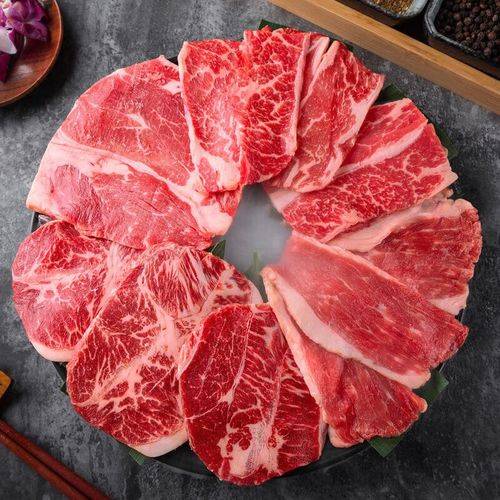
Soaking in a solution containing 1.7 g/L rosemary extract for 41 minutes can significantly reduce the levels of TBA and trimethylamine (TMA) in white crucian carp meat. In addition, the levels of fishy substances that contribute significantly to the fishy smell, such as aldehydes, heptaldehyde, nonanal and 1-octen-3-ol, were also significantly reduced, suggesting that rosemary extract can effectively inhibit the lipid oxidation of silver carp meat and improve the flavor of the fish, which is of positive significance for promoting the development of the silver carp processing industry [55]. Ma Chenyang et al. [56] also showed that rosmarinic acid is an active substance for deodorizing fish, and that the deodorizing ability is positively correlated with its concentration. The mechanism of rosemary extract in protecting meat quality and deodorizing may be: rosemary extract can effectively delay the oxidation rate of meat and maintain the relative stability of meat components [57]; it can competitively bind to the hydrophilic sites of myofibrillar proteins with fishy substances and enhance the interaction between proteins and proteins, thereby promoting the release of fishy substances [58].
7 Summary
In summary, rosemary extract contains rosemary essential oil, carnosic acid, ursolic acid, oleanolic acid and rosmarinic acid, which play an active role in antioxidant, immune regulation, liver protection and antibacterial activities. Adding rosemary extract to animal feed can promote the healthy growth of animals by improving their antioxidant capacity and immunity and improving meat quality. However, the current research on the mechanism of rosemary extract promoting the healthy growth of animals mainly focuses on enzyme activity levels, and there has been little research on the molecular mechanism, which requires further systematic and in-depth research. In addition, on this basis, further research is needed to determine whether the effects of different rosemary extract components in promoting the healthy growth of animals and their mechanisms of action are consistent or different, in order to provide guidance for the comprehensive application of rosemary extract in animal husbandry.
Reference
[1 ] KUO C F,SU J D,CHIU C H,et al.Anti-inflammato- ry effects of supercritical carbon dioxide extract and its isolated carnosic acid from Rosmarinus officinalis leaves[J].Journal of Agricultural and Food Chemis- try,2011,59( 8) : 3674-3685.
[2 ] COLICA C,DI RENZO L,AIELLO V,et al. Rosmarinic acid as potential anti-inflammatory agent[J]. Re- views on Recent Clinical Trials,2018,13 ( 4 ) : 240 - 242.
[3 ]ZHANG Y.Study on the efficient separation and an- tioxidant capacity of rosemary antioxidants[D].Ph.D . Thesis.Harbin : Northeast Forestry University,2008. [4 ]WU S Y,TANG X,DENG Y E,et al. Research pro- gress on extraction method and activity of Rosmarinus officinalis essential oil[J].Guangdong Chemical In- dustry,2021,48 (23) : 93-95.
[5 ]CHENG X,BI L W,ZHAO Z D,et al. Research pro- gress on extraction ,purification and biological activi- ties of rosmarinic acid[J].Chemistry and Industry of Forest Products,2015,35 (4) : 151-158.
[6 ]QU L L,DUAN K L,WU Y N,et al.Extraction process of rosmarinic,carnosic and ursolic acids from rosemary[J].Science and Technology of Food Indus- try,2019,40(9) : 208-212.
[7 ] ZUO A L.Study on essential oil of rosemary in anni- versary and effect on reducing blood lipids of rosemary[D].Master ’s Thesis.Shanghai : Shanghai Jiaotong University,2007.
[8 ] CHENG Q G,GAO L Q,DENG F Y,et al.Applica- tion of antioxidant in cosmetics industry[J].Detergent & Cosmetics,2019,42 (2) : 32-38,40.
[9 ]YU H M ,JIANG X T,LI Q T,et al.Progress in re- search work on skin-whitening effect of essential oils [J].China Surfactant Detergent & Cosmetics,2014,44 ( 1) : 45-49.
[10] MIRESMAILLI S.Assessing the efficacy and persist- ence of rosemary oil as a miticide / insecticide for use on greenhouse tomato[D].Master ’s Thesis.Vancou- ver: University of British Columbia,2006.
[11] CHENG Z H,TIAN Y M ,FAN F F,et al.The effects of Rosmarinus officinalis essential oil against Tetrany- chus cinnabarinus ( Acari: Tetranychidae) on protec- tive enzyme activities[J].Journal of Gansu Agricul- tural University,2020,55 (5) : 129-135.
[12] KIRAN S,PRAKASH B.Toxicity and biochemical ef- ficacy of chemically characterized Rosmarinus offici- nalis essential oil against Sitophilus oryzae and Oryza- ephilus surinamensis[J].Industrial Crops and Products,2015,74 : 817-823.
[13]LIU D L,WANG K,YANG J Q,et al.The effects of rosemary essenstial oil on the growth performance, meat quality and antioxidant indexes of Jing hai yellow chickens[J].Chinese Journal of Animal Science, 2014,50( 11) : 65-68.
[14]MA H,MA J Y,LONG S F,et al.Effects of encapsu- lated rosemary essential oil on growth performance, nutrient apparent digestibility,serum immune and antioxidant indexes of weaned piglets[J].Chinese Jour- nal of Animal Nutrition,2021,33 ( 12) : 6740-6748.
[15] XIA T J.Separation and purification of carnosic acid from rosemary leaves and investigation of biological activities of carnosic acid[D].Master ’s Thesis.Bei- jing : Chinese Academy of Forestry,2015.
[16]ZHOU H L,LIANG W X,XU D L,et al. Research progress on pharmacological action of rosemary active extract [J].Global Traditional Chinese Medicine,2015,8 ( 12) : 1542-1545.
[17]LI Y,GENG Y J,YU H F,et al.Study on the protec- tive effect of carnosic acid on MPTP-induced dopamine neuron damage[J].Natural Product Research and Development,2021,33 (7) : 1172-1177.
[18]CHENG J.Protective effect of carnosic acid on spinal cord injury via inhibiting ferroptosis[D].Ph.D.Thesis. Urumqi: Xinjiang Medical University,2021.
[19]ZHANG M F,SHEN Y Q . Research progress on neu- ropsychopharmacologic effects of oleanolic acid and ursolic acid[J].Drug Evaluation Research,2015,38 (5) : 570-576.
[20] YIM T K,WU W K,PAK W F,et al.Hepatoprotec- tive action of an oleanolic acid-enriched extract of Li- gustrum lucidum fruits is mediated through an en- hancement on hepatic glutathione regeneration capacity in mice[J].Phytotherapy Research,2001,15 ( 7 ) : 589-592.
[21]ZHANG M F,SHEN Y Q . Research advances on hep- atoprotective activities of oleanolic acid and ursolic acid[J].Anti-Infection Pharmacy,2012,9 ( 1 ) : 13 - 19.
[22] SARASWAT B,VISEN P K S,AGARWAL D P.Ur- solic acid isolated from Eucalyptus tereticornis pro- tects against ethanol toxicity in isolated rat hepatocytes [J].Phytotherapy Research,2000,14 (3) : 163-166.
[23] CHUN J,LEE C,HWANG S W,et al.Ursolic acid in- hibits nuclear factor-κB signaling in intestinal epitheli- al cells and macrophages,and attenuates experimental colitis in mice[J].Life Sciences,2014,110 ( 1) : 23 -34.
[24] NATIO Y,OKA S,YOSHIKAWA T.Inflammatory response in the pathogenesis of atherosclerosis and its prevention by rosmarinic acid,a functional ingredient of rosemary[M]/ / SHAHID I F,HO C T,WATAN- ABE S,et al.Food factors in health promotion and dis- ease prevention.Washington,D.C.: American Chemi- cal Society,2003 : 208-212.
[25] YAO Y,MAO J J,XU S Z,et al. Rosmarinic acid in- hibits nicotine-induced C-reactive protein generation by inhibiting NLRP3 inflammasome activation in smooth muscle cells[J].Journal of Cellular Phy siolo- gy,2019,234 (2) : 1758-1767.
[26]SUN X,WANG J C,LI H T,et al.A study on the an- tibacterial mechanism of rosmarinic acid[J].Journal of Qing dao University ( Natural Science Edition ) , 2005,18 (4) : 41-45.
[27]LEI M K,LI R L,LI P P,et al.Effects of dietary ros- marinic acid on colonic microbiota composition,barri- er function and inflammatory response in weaned pig- lets challenged with enterotoxigenic Escherichia coli K88[J].Chinese Journal of Animal Nutrition,2022, 34 ( 8) : 4944-4958.
[28] GHAZALAH A A,ALI A M . Rosemary leaves as a dietary supplement for growth in broiler chickens[J]. International Journal of Poultry Science,2008,7 ( 3) :
234-239.
[29]FU X Q,FAN Q,GOU D,et al.Effects of Rosmarinus officinalis extract on performance,egg quality and an- tioxidant function of black feather green shell laying hens[J].Chinese Journal of Animal Nutrition,2022, 34 ( 1) : 329-339.
[30] KARATA T,KORKM AZ F,KARATA A,et al. Effects of rosemary ( Rosmarinus officinalis ) extract on growth,blood biochemistry,immunity,antioxidant, digestive enzymes and liver histopathology of rainbow trout,Oncorhynchus mykiss [J].Aquaculture Nutri- tion,2020,26(5) : 1533-1541.
[31] YADOLLAHI F,SOLTANI M ,MODARRESI M H, et al.Efficacy of vitamin E with or without probiotic, astaxanthin or rosemary extract on growth perform- ance,survival,haematological parameters,antioxidant activity and liver enzymes in rainbow trout ( On- corhynchus mykiss) [J].Aquaculture Research,2021, 52 ( 11) : 5606-5616.
[32] TURAN F,YIITARSLAN D.The effects of rosemar- y extract (Rosemaria officinalis) as afeed additive on growth and whole-body composition of the African catfish ( Clarias gariepinus ( Burchell,1822) ) [J]. Natural and Engineering Sciences ,2016 ,1 ( 3 ) : 49-55.
[33] HERN NDEZ A,GARCA GARCA B,CABALLE- RO M J,et al.Preliminary insights into the incorpora- tion of rosemary extract ( Rosmarinus officinalis L.) in fish feed : influence on performance and physiology of gilthead seabream (Sparus aurata) [J].Fish Physi- ology and Biochemistry,2015,41 (4) : 1065-1074.
[34] YOUSEFI M ,HOSEIN I S M ,VATNIKOV Y A,et al. Rosemary leaf powder improved growth perform - ance,immune and antioxidant parameters,and crow -
ding stress responses in common carp ( Cyprinus carpio) fingerling s[J].Aquaculture,2019,505 : 473 - 480.
[35]ZHANG Z Y,XIAO H Y,LING H,et al.Effects of dietary rosemary extract on performance,antioxidant capacity and immune function of dairy goats[J].Chi- nese Journal of Animal Nutrition,2021,33 ( 10 ) : 5771-5780.
[36] CARDINALI R , CULLERE M ,DAL BOSCO A,et al.Oregano,rosemary and vitamin E dietary supple- mentation in growing rabbits : effect on growth per- formance,carcass traits,bone development and meat chemical composition[J].Livestock Science,2015, 175 : 83-89.
[37] YANG M ,YIN Y X,WANG F,et al.Effects of dieta- ry rosemary extract supplementation on growth per- formance,nutrient digestibility,antioxidant capacity, intestinal morphology,and microbiota of weaning pigs [J].Journal of Animal Science,2021,99 ( 9 ) : skab237.
[38] GHOZLAN S A,EL-FAR A H,SADEK K M ,et al. Effect of rosemary ( Rosmarinus officinalis ) dietary supplementation in broiler chickens concerning immu- nity,antioxidant status,and performance[J].Alexan- dria Journal of Veterinary Sciences,2017,55 ( 1 ) :152-161.
[39] EBRAHIM I E,HAGHJOU M ,NEMATOLLAHI A,et al.Effects of rosemary essential oil on growth perform - ance and hematological parameters of young great sturgeon ( Huso huso) [J].Aquaculture,2020,521 :734909.
[40] AWAD E,AWAAD A . Role of medicinal plants on growth performance and immune status in fish[J]. Fish & Shellfish Immunology,2017,67: 40-54.
[41] ELNAGGAR A S , ABDEL-LATIF M A , EI- KELAWY M I,et al.Productive,physiological and im - munological effect rosemary leaves meal ( Rosemari- nus officinalis ) supplementing to broiler diet [J]. Egyptian Poultry Science Journal,2016,36 ( 3) : 859-873.
[42] VALLABHAPURAPU S,KARIN M . Regulation and function of NF-kappaB transcription factors in the im - mune system [J].Annual Review of Immunology,2009,27 : 693-733.
[43] GUO Y,XIE J P,LI X,et al.Antidepressant effects of rosemary extracts associate with anti-inflammatory effect and rebalance of gut microbiota[J].Frontiers in Pharmacology,2018,9 : 1126.
[44] ZHENG X,FENG L,JIANG W D,et al.Theregulato- ry effects of pyridoxine deficiency on the grass carp ( Ctenopharyngodon idella) gill barriers immunity,ap- optosis,antioxidant,and tight junction challenged with Flavobacterium columnar[J].Fish & Shellfish Immu- nology,2020,105 : 209-223.
[45] POLAT U,YESILBAG D,EREN M.Serum biochemical profile of broiler chickens fed diets containing rosemary and rosemary volatile oil[J].Journal of Bio- logical and Environmental Sciences,2011,5 ( 13) : 23- 30.
[46]CHEN L,ZHAO D Y,WU J M ,et al.Combination effects of hesperidin and rosmarinic acid on growth performance,meat quality and antioxidant function in broilers[J / OL].Journal of Nanjing Agricultural Uni- versity : 1 - 11.http : / / kns.cnki.net / kcms / detail /32.S.20220526.1215.004.html.
[47] ZHENG X,JIANG W D,FENG L,et al.Effects of di- etary pyridoxine on the skin immunity,tight junctions, antioxidants and apoptosis of grass carp ( Ctenopha-ryngodon idella) infected with Aeromonas hydrophila [J].Aquaculture Research,2022,53 (4) : 1582-1596.
[48] YAN M ,LI G B,PETIWALA S M ,et al.Standardized rosemary ( Rosmarinus officinalis ) extract induces N rf2 / sestrin-2 pathway in colon cancer cells[J].Jour- nal of Functional Foods,2015,13 : 137-147.
[49] WANG H L,CHENG J,YANG S N,et al. Rosemary extract reverses oxidative stress through activation of N rf2 signaling pathway in hamsters fed on high fat di- et and HepG2 cells[J].Journal of Functional Foods, 2020,74 : 104136.
[50]GU Y,SUN H Z,SANG D,et al. Research progress on evaluation indices and influencing factors of meat quality[J].China Animal Husbandry & Veterinary Medicine,2013,40(7) : 100-106.
[51] HUGHES J M ,CLARKE F M ,PURSLOW P P,et al. Meat color is determined not only by chromatic heme pigments but also by the physical structure and achro- matic light scattering properties of the muscle[J]. Comprehensive Reviews in Food Science and Food Safety,2020,19( 1) : 44-63.
[52]SUN J X.Analysis and assessment of chilled pork col- or and its color stability[D].Ph.D.Thesis.Nanjing : Nanjing Agricultural University,2004.
[53]LAN W Q,ZHANG X,ZHAO P P,et al.Effect of rosemary extract on the quality and protein properties of white leg shrimp ( Litopenaeus vannamei) during chilled storage[J].Journal of Guangdong Ocean Uni- versity,2021,41 (3) : 82-90.
[54]GU Y T,MOU Q,HUANG Y,et al.Effects of rose- mary and thyme extracts on the quality of chilled pork balls[J].Food Science and Technology,2021,46 (4) : 103-109.
[55]HUANG P M ,WANG Z R , CHEN X H,et al.Effect of rosemary extract on the fishy odour of silver carp and the optimization of deodorizing conditions[J]. Food and Fermentation Industries,2021,47 ( 6) : 176- 183.
[56] MA C Y,HUANG P M ,DUAN P,et al.Effect of rosemary extract on deodorizing effect of silver carp meat[J / OL].Food and Fermentation Industries : 1-10. https : / / doi.org / 10. 13995 /j.cnki. 11 - 1802 / ts.032179.
[57]WU M M ,LI C H,DONG R Y,et al.Preparation of chitosan / rosemary extract nanoparticles and their effects on grass carp ( Ctenopharyngodon idellus )protein oxidation during cold storage[J].China Fisher- y Quality and Standards,2018,8 (6) : 11-17.
[58] HUANG P M ,WANG Z R , FENG X Y,et al.Promo- tion of fishy odor release by phenolic compounds through interactions with my ofibrillar protein[J].Food Chemistry,2022,387 : 132852.


 English
English French
French Spanish
Spanish Russian
Russian Korean
Korean Japanese
Japanese